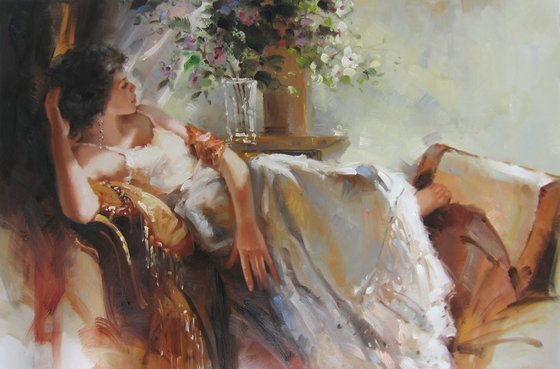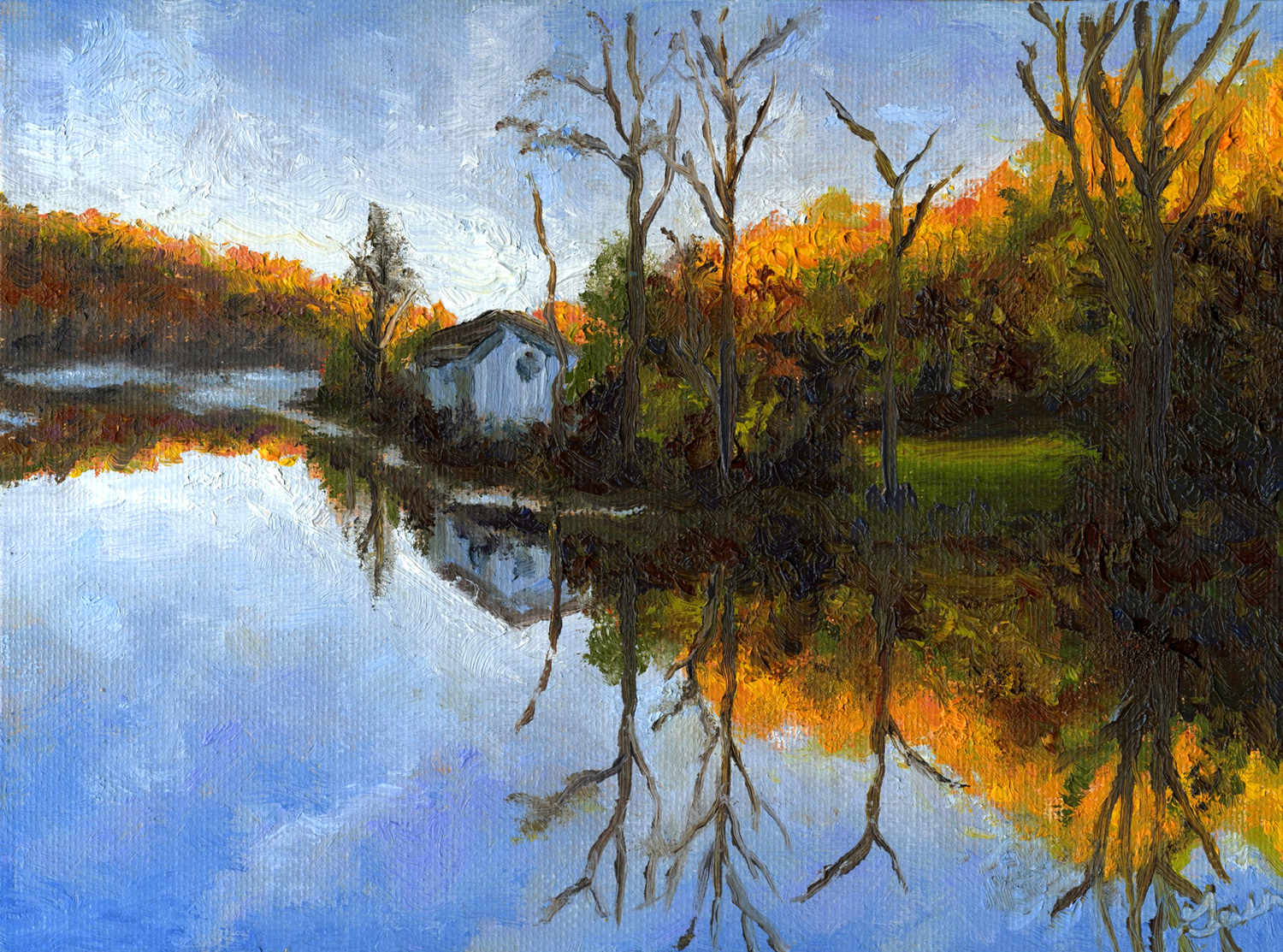Shop Handpicked Assortments of Oil Paintings for Sale
Shop Handpicked Assortments of Oil Paintings for Sale
Blog Article
Checking out All Regarding Oil Paints: A Guide to Recognizing Their Charm and Worth
Oil paints have captivated target markets for centuries, supplying a glance into the creative mastery of numerous ages. Their abundant background is intertwined with cutting-edge strategies and profound psychological expression. Understanding the products and approaches behind these art work can boost appreciation. Additionally, the marketplace for oil paintings presents chances for capitalists and enthusiasts alike. As one discovers this remarkable world, the question arises: what makes an oil painting genuinely important?
The Background of Oil Paint: A Journey Via Time
Oil paint has roots that date back to old times, it really thrived during the Renaissance, when artists uncovered its versatility and rich color capacity. Early examples can be traced to the 7th century, with methods developing notably throughout societies. The medium ended up being noticeable in Northern Europe in the 15th century, particularly through the jobs of musicians like Jan van Eyck, who pioneered its usage for thorough realism and lively shades. This period noted a departure from tempera paints, permitting for greater deepness and appearance. As oil paint spread, it affected numerous artists, leading to masterpieces by distinguished numbers such as Leonardo da Vinci and Rembrandt. The tool's heritage continues, shaping the art globe well into modern times.
Comprehending Oil Repaints: Materials and Techniques
As musicians discover the world of oil paints, they come across a diverse range of materials and strategies that define this tool. The key parts of oil paint include pigments, which provide color, and drying oils, such as linseed, that bind the pigments and help with application. Numerous ingredients can change the paint's appearance and drying time, enhancing flexibility. Strategies like glazing, where clear layers are developed, and impasto, which entails using thick paint, permit for different visual results. Furthermore, making use of brushes, combination knives, and even fingers can develop distinct textures and surfaces. Comprehending these materials and methods allows artists to completely reveal their creativity and accomplish the preferred impact in their artwork.
The Duty of Shade in Oil Paints
Color plays an essential duty in oil paints, affecting both aesthetic allure and emotional resonance. Comprehending shade theory basics, including the relationships in between tones, can improve an artist's capacity to convey mood and atmosphere. Furthermore, understanding shade mixing techniques enables better deepness and richness in a painting's scheme.

Shade Concept Fundamentals
Understanding color concept is essential for artists collaborating with oil paints, as it develops the foundation for developing visually appealing and harmonious structures. Shade theory includes the research of how shades connect, the shade wheel, and the partnerships in between key, second, and tertiary colors. Artists utilize corresponding colors to enhance contrasts and develop centerpieces, while similar colors advertise unity and cohesiveness within a piece. In addition, the principles of great and warm colors affect the understanding of depth and space in a paint. Comprehending these concepts allows musicians to adjust shade properly, assisting the visitor's eye and connecting their intended message. Mastery of color concept inevitably enriches a musician's ability to convey feelings and ideas with their work.
Psychological Effect of Color
The emotional impact of color in oil paints plays a critical function in exactly how customers connect and regard with artwork. Colors evoke particular sensations and moods, influencing the viewer's mood. Warm tones like reds and oranges can develop a feeling of heat and power, while cool tones such as blues and eco-friendlies typically stimulate calmness or self-questioning. Artists strategically pick color combinations to enhance narrative aspects, guiding the audience's psychological journey. The saturation and comparison of colors even more amplify these results, drawing focus and creating emphasis. Eventually, the interaction of shades in oil paints not just improves their visual allure but additionally acts as an effective medium for emotional expression, improving the viewer's experience and interpretation.
Color Mixing Techniques
While lots of facets of oil paint add to the general composition, grasping shade mixing strategies is vital for achieving wanted results and depth. Color mixing can be approached via various methods, consisting of the additive and subtractive processes. Additive mixing involves integrating colors of light, while subtractive mixing relies upon pigments, where shades mix to produce new tones. Musicians typically make use of a restricted palette to create harmonious works, recognizing the connections between primary, secondary, and tertiary shades. Methods such as glazing and scumbling further enhance deepness and luminosity. By skillfully mixing shades, a musician can evoke feelings, develop prime focus, and accomplish a feeling of realistic look, ultimately boosting the paint's psychological and visual influence.
Famous Oil Painters and Their Iconic Works

Famed for their mastery of color and technique, oil painters have actually produced several of one of the most popular artworks in background. Popular musicians like Vincent van Gogh mesmerized audiences with his emotive brushwork in "Starry Night," while Claude Monet's "Impact, Daybreak" laid the foundation for Impressionism. oil paintings for sale Leonardo da Vinci's "Mona Lisa" continues to be a long-lasting icon of creative genius, showcasing his ability in recording human expression. Rembrandt's "The Evening Watch" highlights his ingenious use of light and darkness. Other noteworthy figures include Pablo Picasso, that revolutionized modern art with his bold testing in jobs like "Les Demoiselles d'Avignon," and Georgia O'Keeffe, whose dynamic representations of blossoms and landscapes aided define American modernism. Each musician's special design added significantly to the oil painting landscape.
How to Assess the Top Quality of an Oil Painting
Reviewing the high quality of an oil painting entails a cautious assessment of craftsmanship methods, along with an analysis of color and make-up. Observing brushwork, layering, and the application of paint can reveal the artist's skill level. Additionally, the interaction of colors and the total setup of components contribute significantly to the paint's aesthetic worth.
Analyzing Workmanship Strategies
A precise evaluation of workmanship methods is necessary for figuring out the quality of an oil painting. Evaluators ought to first check out the application of paint; thick, distinctive brushstrokes may suggest a proficient hand, while excessively uniform applications can show an absence of depth. oil paintings for sale. The layering technique is additionally essential; the visibility of glazes and differed density can boost luminance and complexity. Additionally, the high quality of the materials made use of, such as the canvas and pigments, plays a considerable function in durability and total aesthetic. Focus to information in elements like edges and changes in between shades mirrors the musician's dedication to their craft. Ultimately, these strategies add to the paint's psychological effect and market price, functioning as indicators of the musician's skill and intent
Analyzing Shade and Make-up
While assessing the quality of an oil painting, one must concentrate on the interaction of shade and composition, as these aspects are fundamental to the art work's overall influence. Color selections can establish and stimulate emotions mood; for that reason, the artist's scheme must be examined for consistency and contrast. A well-balanced structure directs the audience's eye and produces a sense of unity. Musicians typically employ strategies like the policy of thirds or leading lines to boost visual interest. In addition, using light and shadow can include deepness, improving the three-dimensionality of the painting. Ultimately, an effective oil painting weds shade and make-up, involving the visitor and inviting a deeper admiration of the artist's vision and method.
Taking care of and Preserving Oil Paintings
Correct care and conservation of oil paintings is important for keeping their integrity and long life. To safeguard these artworks, it is important to display them away from direct sunlight, which can create fading and staining. Keeping a steady environment with regulated temperature and humidity more help in avoiding damages. Cleaning need to be done carefully utilizing a soft, completely dry fabric, preventing any kind of harsh chemicals that can hurt the paint or varnish. Normal assessments for signs of wear and tear, such as flaking or breaking, are suggested. When carrying or storing oil paints, appropriate extra padding and framework are essential to stay clear of physical injury. Ultimately, diligent treatment contributes to the aesthetic appeal and worth of oil paints gradually.
The Market for Oil Paintings: Collecting and Spending
Understanding the market dynamics for oil paints is vital for investors and collectors alike. The worth of these artworks is influenced by numerous elements, including the musician's credibility, historical significance, and current patterns. Collectors often look for pieces that reverberate personally while considering possible gratitude in value. Galleries and auctions act as key locations for trading, with prices fluctuating based on demand and rarity. Purchasing oil paintings requires study right into the market, along with an understanding of credibility and provenance. Additionally, emerging artists may offer opportunities for considerable returns, while established names can command high prices. Overall, a critical approach to collecting can produce both visual enjoyment and monetary benefits.

Frequently Asked Concerns
What Are the Ecological Effects of Oil Painting Materials?
The environmental influences of oil paint materials consist of the release of unstable organic substances (VOCs), damaging waste generation, and resource extraction for pigments. These variables add to pollution and environmental destruction, raising concerns among ecologically mindful artists and consumers.
Just How Do Various Canvases Impact Oil Painting Results?
Different canvases affect oil painting results substantially. Absorbency, surface, and appearance top quality can modify paint application, drying times, and color vibrancy. Musicians commonly pick particular canvases to accomplish desired effects and enhance their creative expression.
Can Oil Paintings Be Recovered if Harmed?
If damaged, Oil paintings can indeed be brought back. Professional conservators use various techniques to repair rips, tidy surface areas, and address staining, ensuring that the art work retains its original appeal and value for future generations.
What Are the Indicators of an Initial Oil Paint?
The signs of an original oil painting include noticeable brush strokes, appearance variations, and an uneven canvas weave (oil paintings for sale). Additionally, authenticity may be validated via provenance, trademarks, and the existence of a varnish layer special to oil tools
Just How Has Innovation Influenced Modern Oil Paint Techniques?
Innovation has actually greatly affected modern oil painting techniques by introducing digital devices for preparation, enhanced materials for structure and long life, and on-line systems for sharing and marketing art, consequently increasing musicians' creative possibilities and audience get to. Oil paint has roots that date back to ancient times, it truly thrived throughout the Renaissance, when musicians found its adaptability and abundant color possibility. The emotional impact of color in oil paints plays an important duty in just how viewers link and regard with art work. While several aspects of oil paint contribute to the general make-up, grasping color mixing strategies is crucial for attaining preferred effects and depth. Reviewing the high quality of an oil paint includes a mindful evaluation of workmanship strategies, as well as an analysis of color and make-up. While evaluating the top quality of an oil paint, one must concentrate on the interplay of color and composition, as these components are essential to the art work's total effect.
Report this page